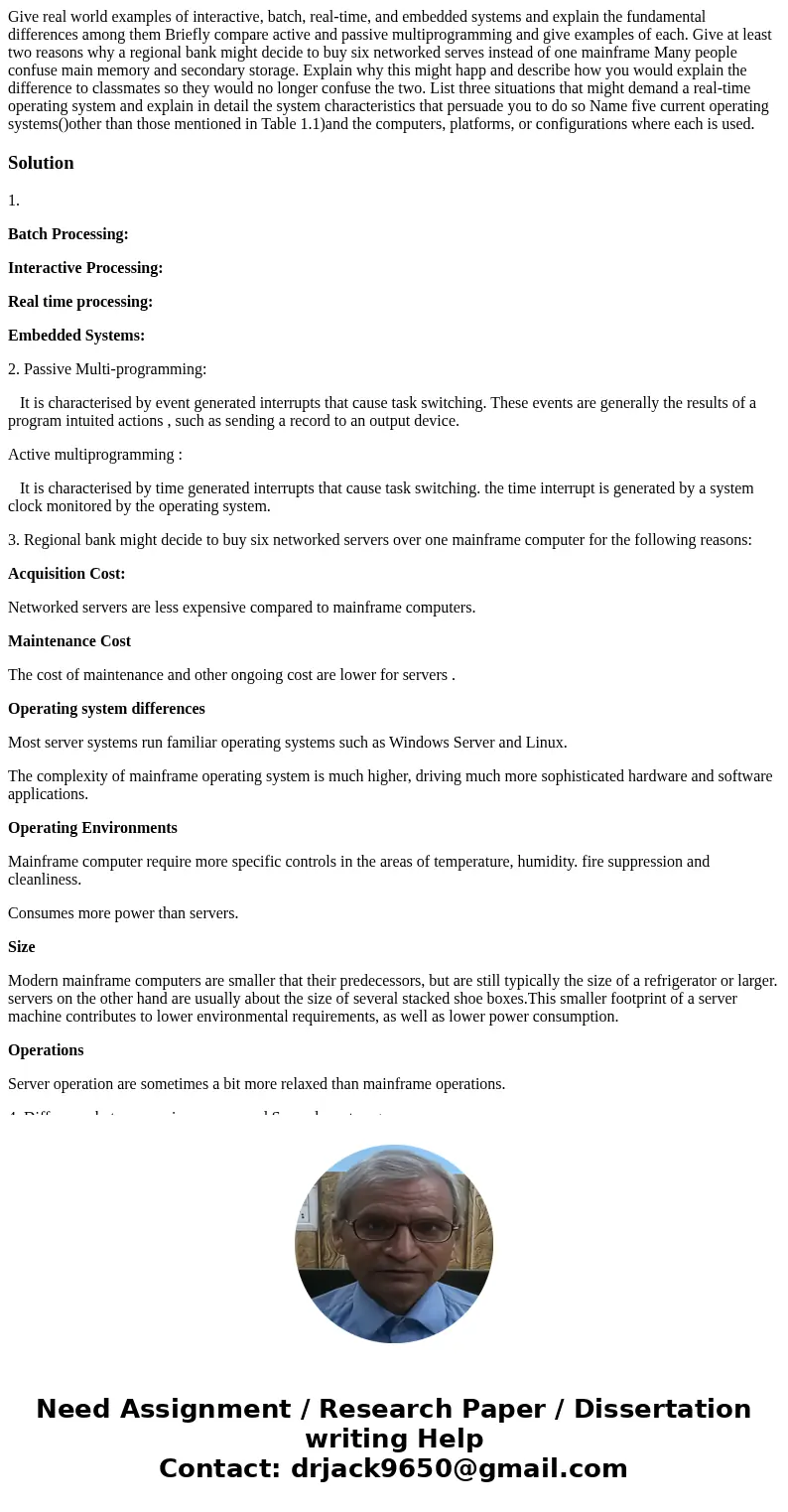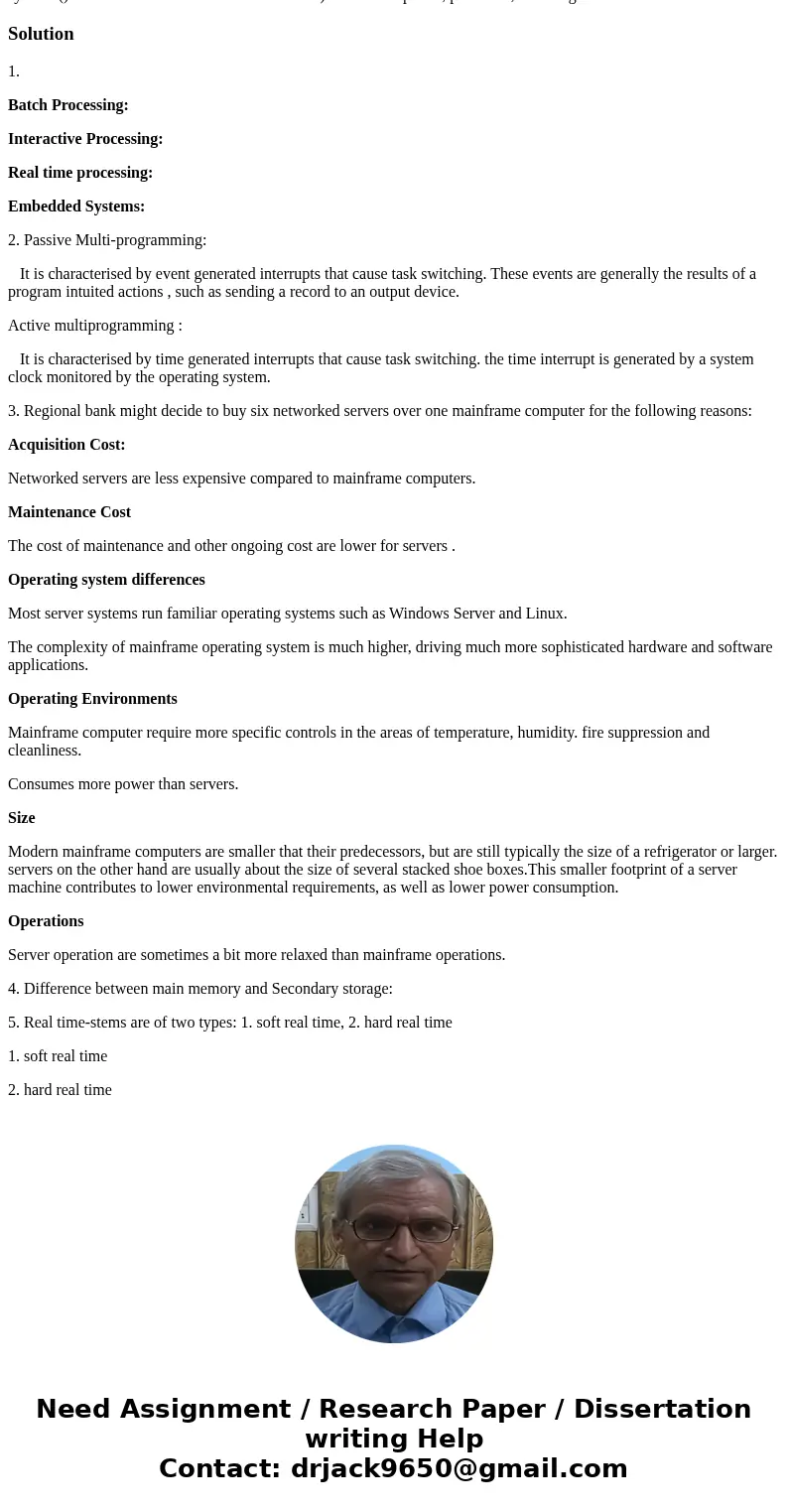Give real world examples of interactive batch realtime and e
Solution
1.
Batch Processing:
Interactive Processing:
Real time processing:
Embedded Systems:
2. Passive Multi-programming:
It is characterised by event generated interrupts that cause task switching. These events are generally the results of a program intuited actions , such as sending a record to an output device.
Active multiprogramming :
It is characterised by time generated interrupts that cause task switching. the time interrupt is generated by a system clock monitored by the operating system.
3. Regional bank might decide to buy six networked servers over one mainframe computer for the following reasons:
Acquisition Cost:
Networked servers are less expensive compared to mainframe computers.
Maintenance Cost
The cost of maintenance and other ongoing cost are lower for servers .
Operating system differences
Most server systems run familiar operating systems such as Windows Server and Linux.
The complexity of mainframe operating system is much higher, driving much more sophisticated hardware and software applications.
Operating Environments
Mainframe computer require more specific controls in the areas of temperature, humidity. fire suppression and cleanliness.
Consumes more power than servers.
Size
Modern mainframe computers are smaller that their predecessors, but are still typically the size of a refrigerator or larger. servers on the other hand are usually about the size of several stacked shoe boxes.This smaller footprint of a server machine contributes to lower environmental requirements, as well as lower power consumption.
Operations
Server operation are sometimes a bit more relaxed than mainframe operations.
4. Difference between main memory and Secondary storage:
5. Real time-stems are of two types: 1. soft real time, 2. hard real time
1. soft real time
2. hard real time


 Homework Sourse
Homework Sourse